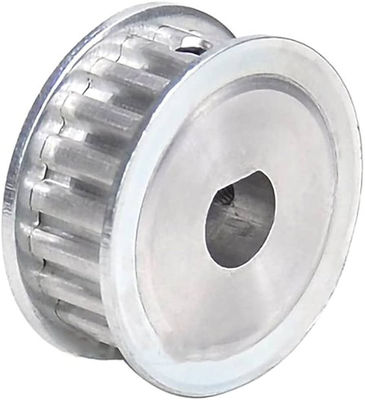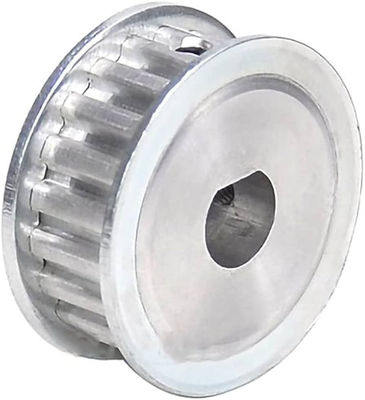
Contact me for free samples and coupons.
Whatsapp:0086 18588475571
Wechat: 0086 18588475571
Skype: sales10@aixton.com
If you have any concern, we provide 24-hour online help.
x| Name | Synchronous Wheel | Color | Silver Black White |
|---|---|---|---|
| Application | Textile Machinery Accessories | Material | Aluminium Or Steel |
| High Light | Black Synchronous Wheel,White Synchronous Wheel,Textile Machine Part Aluminium Steel |
||
Silver Black White Textile Machinery Accessories Synchronous Wheel Aluminium Steel
In textile machinery, a synchronous wheel refers to a toothed wheel that is used in conjunction with a synchronous belt or timing belt to achieve synchronous power transmission. Synchronous wheels are commonly employed in various textile machinery applications where precise and coordinated movement is required. Here are some key points about synchronous wheels in textile machinery:
-
Synchronous Power Transmission: Synchronous wheels, also known as timing pulleys, are used in textile machinery to transmit power from one rotating component to another using a synchronous belt. The teeth on the wheel mesh with the corresponding teeth on the belt, ensuring a positive and synchronized power transfer.
-
Tooth Profile: Synchronous wheels have teeth with a specific tooth profile that matches the profile of the synchronous belt. The most common tooth profiles include trapezoidal (such as HTD or STD) and curvilinear (such as GT or HTDGT). The choice of tooth profile depends on factors such as torque requirements, speed, and design considerations of the textile machinery.
-
Synchronous Belt: Synchronous wheels work in conjunction with a synchronous belt, also known as a timing belt. The belt is made of a flexible material with teeth on its inner surface that mesh with the teeth on the synchronous wheel. The combination of the belt and wheel allows for precise and reliable power transmission.
-
Precision and Synchronization: Synchronous wheels and belts are used in textile machinery applications that require precise and synchronized movement. They ensure that the various components of the machinery, such as rollers, spindles, or conveyors, rotate or move in a coordinated manner, maintaining accurate timing and alignment.
-
Material and Construction: Synchronous wheels are typically made from materials such as aluminum, steel, or plastic, depending on the specific requirements of the textile machinery application. The choice of material depends on factors such as load capacity, speed, environmental conditions, and compatibility with the synchronous belt.
-
Maintenance and Replacement: Proper maintenance of synchronous wheels and belts is essential to ensure their longevity and reliable performance. Regular inspection, cleaning, and lubrication, as recommended by the manufacturer, help prevent premature wear or damage. Worn-out or damaged synchronous wheels or belts should be replaced promptly to maintain the optimal functioning of the textile machinery.
-
Customization: Synchronous wheels can be customized to meet the specific requirements of textile machinery applications. This includes variations in tooth profile, diameter, number of teeth, and shaft mounting options. Customization ensures that the synchronous wheel is accurately matched to the power transmission needs of the machinery.
It's important to consult the machinery manufacturer's documentation or seek advice from a specialist to determine the appropriate synchronous wheel and belt specifications for your specific textile machinery application. They can provide guidance on the correct tooth profile, size, and material selection to ensure efficient and reliable power transmission.





